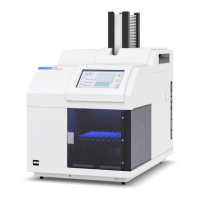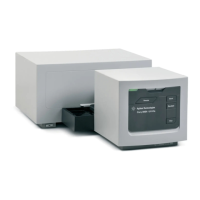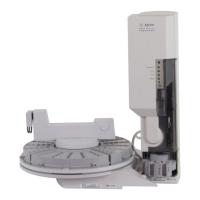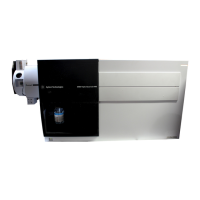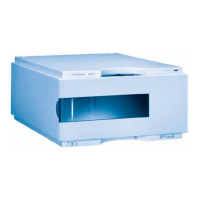5Methods
78 Operation Manual
Events
Run time programming during a method allows certain setpoints to be changed during a run
as a function of the chromatographic run time. Thus an event that is programmed to occur at
2 minutes will occur 2 minutes after every injection.
• Controlling column switching or other valves
• Changing analog signal definition, zero, or range
• Controlling an auxiliary pressure channel
• Changing polarity of a thermal conductivity detector (TCD)
• Make sample flow bypass TCD filament
• Turning the hydrogen flow to a nitrogen-phosphorus detector (NPD) on or off
• Switching digital signal output (requires an Agilent data system)
• Pausing (“freezing”) and resuming digital signal output (requires an Agilent data system)
• Performing signal math on the front and back detectors.
The changes are entered into a run table that specifies the setpoint to be changed, the time for
the change, and the new value. At the end of the chromatographic run, most setpoints
changed by a run time table are returned to their original values.
Valves can be run time programmed but are not restored to their starting position at the end of
the run. You must program the reset operation in the run table if this action is desired.
Using run time events
The Events page in the Method tab is used to program the following timed events.
• Valves (1-10)
• Multiposition valve
• Signal type
• Analog signal definition, zero, and range
• Auxiliary pressures (1 through 9)
• TCD negative polarity (on/off)
• Detector gas flow (on/off), including NPD H
2
fuel gas
• Inlet septum purge flow
• AO signal range
• AO signal source
• AO signal zero
• Bypass TCD Filament

